- Home
- Encyclopedia
- Wyoming and World War II
Wyoming and World War II
One of the first Wyoming men killed during the Second World War was also one of the last to return home.
Navy Machinist’s Mate First Class George Hanson died on Dec. 7, 1941, when the Japanese attacked Pearl Harbor, Hawaii. He was among 429 servicemen killed when torpedo bombers assaulted the battleship USS Oklahoma, capsizing it.
Hanson was not identified until more than 70 years later, thanks to advances in identification technology. In 2019, his remains were buried at Greenhill Cemetery in Laramie, Wyo.
In all, 1,095 Wyoming servicemen died in the fighting or from related injuries. No county in the state was spared.
The Second World War galvanized the nation, forging in fire what some observers have called the “American spirit.”
The war "strengthened us as a country," historian Stephen Ambrose said in a National Geographic interview. "We were much more committed to the idea of country, rather than region. People didn't speak of themselves anymore as being, 'Well, I'm a Rebel, I'm from Mississippi.' 'I'm a Yankee, I'm from Wisconsin.' [It was], 'I'm an American.' That would always spring first to their lips.
“We're all in this together, and we will fight it out together,” Ambrose said.
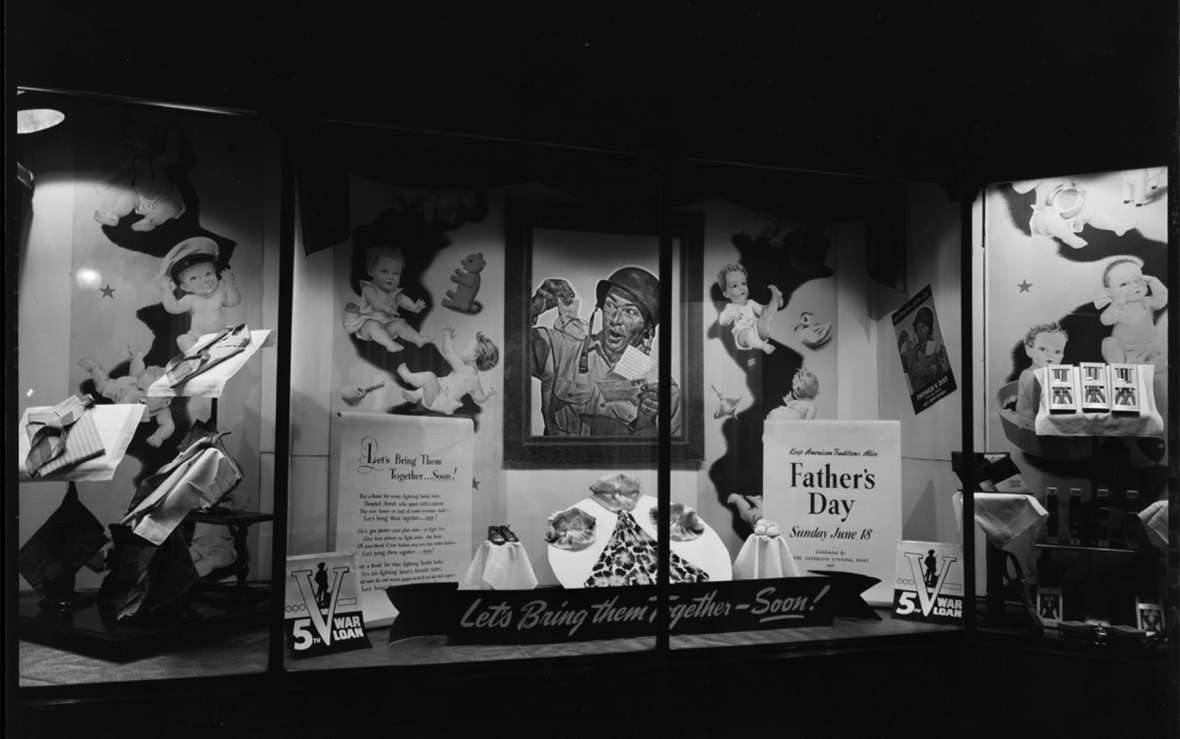
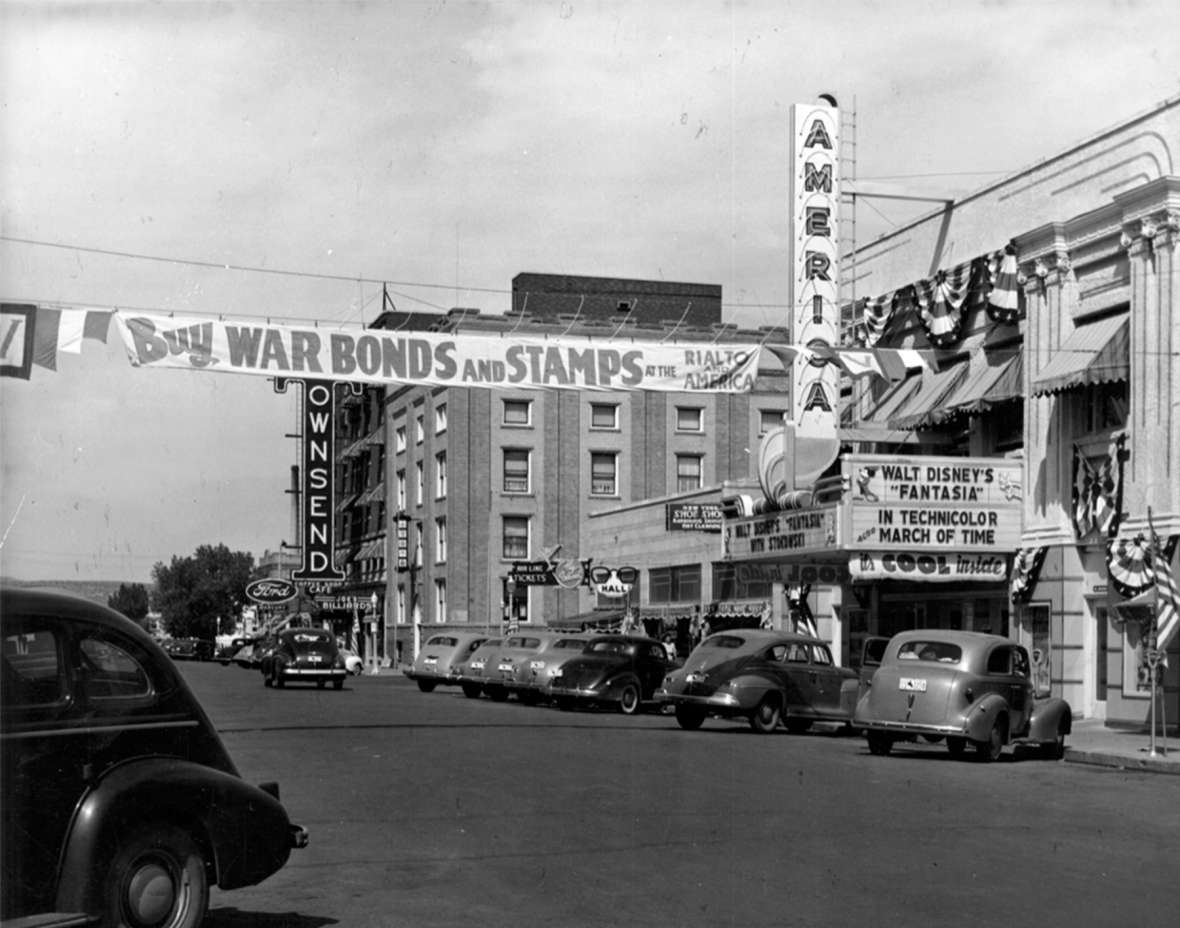
War bonds
In Wyoming, patriotic fervor took many forms. War bond drives were conducted throughout the war. In 1942, people were asked to invest 10 percent of their paychecks in war bonds or “to the limit of their ability.” By February 1943, 25,000 workers in 303 businesses were enrolled in the plan.
Communities also were encouraged to buy bonds for particular aircraft; for example, $450,000 invested in bonds would purchase a heavy bomber. Movie stars like Ronald Colman and Ann Sheridan helped sell bonds in several towns; a $1,000 bond entitled the buyer to lunch with stars in Casper and Cheyenne.
Newspaper editorials extolled the virtues of bond buying, while feature articles highlighted exemplary behavior—a sheepherder using his entire paycheck to buy bonds, for example, or the Eastern Shoshone tribe authorizing the Interior Department to purchase bonds with interest from the tribe’s judgment fund.
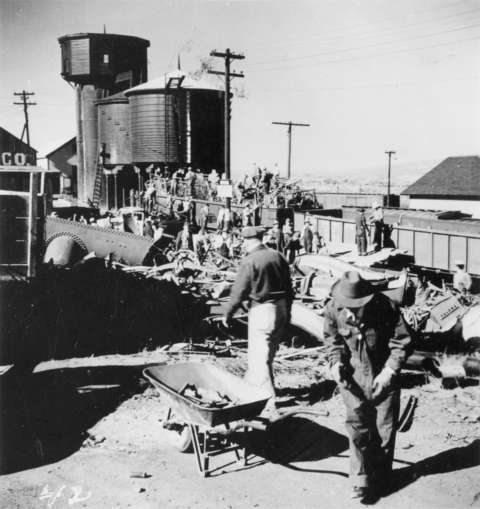
Auctions were another means for selling bonds. In Worland, Wyo., a prize pig brought $11,500, while Burns and Carpenter auctioned off homemade pies. A particular cherry pie yielded $1,000.
Scrap metal
Collecting scrap metal was another popular way for folks on the home front to support the troops. In Wyoming, agricultural scrap fetched 40 to 50 cents per 100 pounds from dealers, or it could be donated to the American Legion or Red Cross.
The town of Medicine Bow, Wyo., population 338 in 1940, conducted two scrap metal drives. The first yielded a stack of steel, iron and copper, which was piled next to U.S. Highway 30. Locals wrote messages on the scrap, “Special delivery to Hitler” and “This one is for you, Tojo.”
A crowd turned out when the pile was collected. Speeches, a high school band and dancing to Dixieland jazz capped off the day.
One controversial Cheyenne scrap metal donation left some people scratching their heads. Officials decided to remove captured World War I German artillery pieces from the state house lawn—over objections from the Wyoming Stock Growers Association.
“Why do we sit back and permit things to be destroyed that stand for our traditions?” association secretary Russell Thorp asked. “Why do we have to destroy things that create interest in and respect for the very ideals that we are now fighting to preserve?”
The objection did not persuade state salvage officials, who sent the howitzers to a smelter anyway.

Red Cross and Victory Gardens
Organizations ranging from the Red Cross to Camp Fire Girls aided the war effort.
Red Cross sewing rooms provided garments for soldiers and refugees. A national Red Cross publication reported an interview with a Russian woman in Stalingrad who proudly showed off items marked, “Gift of the Sheridan County Chapter, American Red Cross, Sheridan, Wyoming.”
Young people joined the Victory Book Campaign to provide reading materials for servicemen. In 1943, the national book drive slogan was, “Any book you really want to keep is the one to give.” Recommended donations included recent technical works, current bestsellers, Westerns, detective stories and books of humor.
Residents across the state also planted so-called Victory Gardens. According to one estimate, Wyoming’s production of garden foodstuffs doubled during the war years. The Union Pacific and Burlington Northern railroads even offered the use of their rights-of-way to plant gardens.
Attack on the Cowboy State
Occasional enemy attacks on American soil occurred or were planned during World War II. A Japanese submarine lobbed several rounds on a California oil field in 1942, and the FBI broke up a sabotage scheme by German agents.
The strangest attacks came in the form of Japanese balloon bombs, called Fu-Gos. These were the ultimate dumb bombs. Fu-Gos were high-altitude balloons loaded with incendiary or antipersonnel bombs released in Japan, with hopes that after a flight to the U.S., they would destroy something significant.
The only fatalities occurred in Oregon, where a woman and several children were killed after trying to retrieve a downed balloon. Their deaths are considered the only combat casualties on continental U.S. soil during the war.
In late 1944, witnesses reported Fu-Go sightings around the West. In Wyoming, people at a coal mine near Thermopolis said they had seen “a parachute in the air, with lighted flares and after hearing a whistling noise, heard an explosion and saw smoke in a draw near the mine about 6:15 p.m.,” according to an article in the journal World War II.
In 1945, the Office of Censorship asked newspaper editors and broadcast managers to suppress information about balloon incidents to prevent the Japanese from obtaining useful targeting data.
After Japan’s surrender, the Associated Press commented, “The Japanese listened eagerly to radio reports, hoping to hear of the bombs’ effectiveness. But American editors voluntarily kept the information to themselves and so discouraged the Japanese that they abandoned the project. The Japanese learned of only one bomb landing in the United States. It was one which came down in Wyoming and failed to explode.”
Whether the AP’s Wyoming reference is related to the Thermopolis incident in which a balloon bomb reportedly detonated is unclear.
Oil and coal production
By 1941, many Wyoming towns had oil refineries, but one in Cheyenne played a particularly direct role in the war effort.
The Frontier Refining Company’s 100-octane fuel plant produced high-grade gasoline for airplanes. Defense analysts felt 100-octane plants should be built close to oil fields but far away from the coasts and thus less vulnerable to enemy air or sea attacks. The fuel increased the performance and range of aircraft and had proven its effectiveness during the Battle of Britain in 1940. But opening the Cheyenne plant proved a lengthy process, and it did not go into service until 1944.
Feeding America’s war machine with petroleum products was a national priority. Quotas were established for each state, which put considerable demands on Wyoming producers early in the war that was compounded by price restrictions. Even so, oil production generally increased, from 25.6 million barrels in 1940 to 35.4 million in 1945. Important discoveries occurred in deeper zones of the Elk Basin, Oregon Basin and Little Buffalo Basin fields.
Wyoming coal production increased from 5.8 million tons in 1940 to 9.8 million tons in 1945. Two-thirds of the state total came from Union Pacific Company mines in the Hanna-Rock Springs area. Most of it was used by U.P. steam locomotives as wartime traffic increased. By the summer of 1945, more than a hundred trains a day were passing through Laramie.
Shortly after Pearl Harbor, Gov. Nels H. Smith ordered law enforcement to require Japanese non-citizens in the state to register. Laramie County listed 103 such persons, followed by Sweetwater County with 45, and Carbon County with 33. Japanese working in the Rock Springs-Hanna coal mines were allowed to keep their jobs. But those working for the railroad were fired, according to an article in the Rock Springs Rocket-Miner.
At least some terminated Japanese railroad workers ended up working for the Thomas Boylan family. The Boylans built “the world’s oldest cabin”—constructed of dinosaur bones—along U.S. Highway 30 east of Medicine Bow. To avoid confrontations, the Boylans reportedly told people the workers were Samoan.
The federal government also investigated technology to produce synthetic fuel derived from coal and oil shale, initiated by the Synthetic Liquid Fuels Act of 1944, but little came of it.
Agriculture
Before the war, agricultural producers often were plagued by surpluses and low prices. But with the outbreak of hostilities, shortages replaced surpluses, and the federal government aggressively tried to manage the food supply. Annual production goals became marching orders of a different sort.
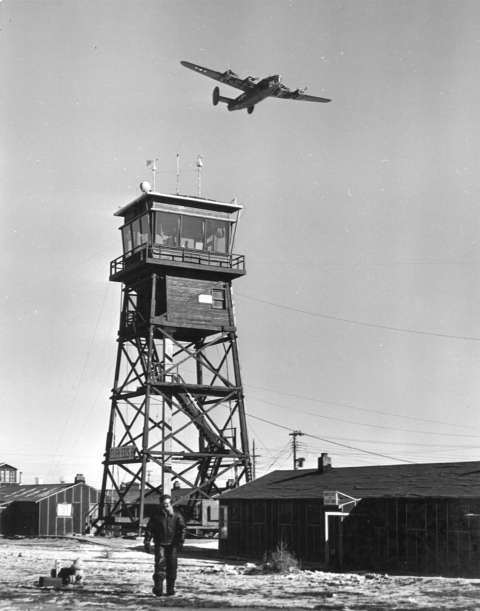
Wyoming’s efforts to reach its targets were sometimes hampered by labor and machinery shortages. Even so, only sheep and sugar beets failed to maintain pre-war production levels.
The most significant increase came in cattle production, which went from 827,000 head in 1941 to a million head in 1945. Part of the growth came when producers switched from sheep to cattle.
Acute agricultural labor shortages developed after Pearl Harbor, as men enlisted, were drafted or relocated for work in war industries. In 1942, a statement from the Stock Growers convention in Gillette declared that the Selective Service, which drafted men for military duty, was “the biggest single threat to the industry.”
After state livestock and Selective Service officials conferred on the matter, Cow Country published instructions on how key personnel on ranches could seek draft deferments. Not long thereafter, the federal Tydings Amendment allowed deferments for people deemed essential to agriculture until satisfactory replacements could be found.
Military training and refitting
The Casper Army Air Base was constructed to train bomber crews for overseas assignments. About 400 buildings and four runways each a mile long were built in a matter of months; the base was activated on Sept. 1, 1942.
The base’s initial mission to train crews for B-17 bombers soon changed to training B-24 crews. During 30 months in operation, the base prepared an estimated 16,000 men for war. It was officially deactivated on March 7, 1945.
Today, the Wyoming Veterans Memorial Museum occupies what had been the base Servicemen’s Club.
In 1942, United Airlines relocated its pilot training school to Cheyenne. A center was soon added where B-17 and B-24 bombers fresh off the assembly line were modified with new guns and instruments.
At one point, the modification center employed 1,600 people, half of them women. By the war’s end, more than 5,000 bombers had been prepared at the facility.
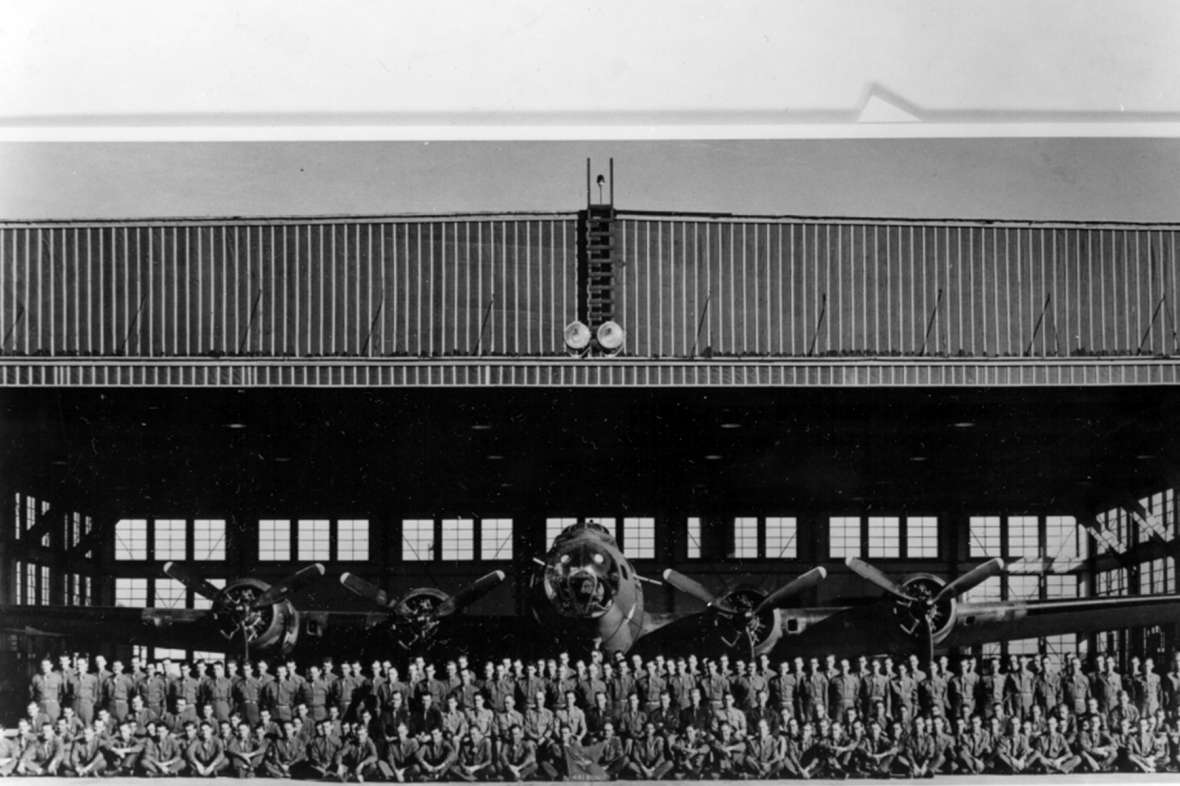
Prisoner-of-war camps
Two major prisoner-of-war camps were located in Wyoming. Because government officials feared possible sabotage of coastal areas, shipyards, munition plants and other vital places, interior sites like Wyoming were considered good camp prospects.
A POW camp in Douglas, Wyo., was the largest in the state. Between 1943 and 1946, it included 180 buildings and housed up to 2,000 Italian and 3,000 German POWs, along with the 500 U.S. Army personnel acting as guards and administrators.
Fort D.A. Russell, located in Cheyenne, was established in 1867 to protect Union Pacific Railroad workers. In 1930, the name was changed to Fort Francis E. Warren.
During World War II, Fort Warren served as a training center for the Army Quartermaster Corps as well as a POW camp. It housed more than 900 German and Italian prisoners at a time.
Small agricultural and timbering operations around the state used POW labor. In fall 1943, for example, Italian prisoners harvested sugar beets near Pine Bluffs, Albin, Veteran and Worland; then beans, potatoes and hay.
“I found them working diligently, in a cheerful frame of mind, and they were literally a godsend to the farmers of Goshen County,” Gov. Lester C. Hunt observed, adding that the harvest could not have been completed without them.
Heart Mountain Relocation Center
On Feb. 19, 1942, President Franklin Roosevelt signed an executive order making it legal to remove people from designated military areas.
Accordingly, thousands of American citizens of Japanese ancestry were removed from the West Coast to the Heart Mountain Relocation Center near Cody, Wyo. In August 1942, the first Heart Mountain internees began arriving by train from California and Oregon. Two-thirds were Nisei, or American born. Heart Mountain was one of 10 such internment camps around the nation.
By 1943, Heart Mountain had nearly 11,000 residents, making it the third largest community in the state. Elected councilmen were appointed to committees on such matters as health and sanitation, food, resettlement and agriculture. There were schools and a weekly newspaper. A hospital with seven doctors and four dentists was opened, along with two movie theaters.
After Pearl Harbor, Japanese-Americans were exempted from the military draft. But in 1944, even while being detained, they became eligible again. The contradiction was not lost at Heart Mountain, where protestors formed the Heart Mountain Fair Play Committee. The group encouraged young Japanese-American men to avoid the draft until their civil rights status was clarified. During the war, 63 defendants were tried and convicted of draft evasion. Seven more members were subsequently prosecuted and sent to federal prison for conspiracy.
But others served with distinction in the Armed Forces and two received the Congressional Medal of Honor. Eleven Heart Mountain servicemen were killed during the war and 52 wounded.
In January 1945, the Sheridan Press commented, “The splendid record of the Nisei fighters who have gone from our concentration camps into the army might well serve to remind overzealous Americans that skin pigmentation in itself is not a badge of disloyalty.”
The last internees left the center on Nov. 10, 1945.
Resources
- “Beware of Japanese balloon bombs.” Wyoming Public Radio, accessed Jan. 15, 2020 at https://www.npr.org/sections/npr-history-dept/2015/01/20/375820191/beware-of-japanese-balloon-bombs.
- Bingo, Steven. “A brief history of Heart Mountain Relocation Center.” WyoHistory.org., accessed Jan. 4, 2020 at /encyclopedia/brief-history-heart-mountain-relocation-center.
- Casper Star-Tribune. “Wyoming checks up on Japanese.” Dec. 10, 1941.
- Casper Star-Tribune, “Six counties have no alien Japanese.” Dec. 14, 1941.
- Cronberg, Marvin. Good Medicine for the Bow: A History of Medicine Bow, Wyoming. Victoria, B.C., Canada: Friesen Press, 2015.
- Defense POW/MIA Accounting Agency. “MM1 George – Hanson,” accessed Jan. 10, 2020 at https://dpaa.secure.force.com/dpaaProfile?id=a0Jt0000000XeLYEA0.
- “Five attacks on U.S. soil during World War II.” History channel, accessed Jan. 10, 2020 at https://www.history.com/news/5-attacks-on-u-s-soil-during-world-war-ii.
- Goss, John. “Aerials to Zephyrs: A brief history of the Casper Army Air Base.” WyoHistory.org, accessed Jan. 8, 2020 at /encyclopedia/aerials-zephyrs-brief-history-casper-army-air-base.
- “Heart Mountain Relocation Center.” National Park Service, accessed Jan. 10, 2020 at https://www.nps.gov/places/heart-mountain-relocation-center.htm.
- “History of F.E. Warren AFB.” F.E. Warren Air Force Base, accessed Jan. 8, 2020 at https://www.warren.af.mil/About-Us/Fact-Sheets/Display/Article/331280/history-of-f-e-warren-afb/.
- Hurt, R. Douglas. “The Great Plains during World War ll.” Lincoln, Neb.: The University of Nebraska Press, 2008.
- Larson, T.A. “Wyoming’s War Years, 1941-1945.” Laramie, Wyo.: The University of Wyoming, 1954.
- Mackey, Mike. “Cheyenne’s 100-octane aviation fuel plant.” Dec. 28, 2014. WyoHistory.org, accessed Jan. 8, 2020 at /encyclopedia/cheyennes-100-octane-aviation-fuel-plant.
- Mikesh, Robert C. “Japan’s World War II balloon bomb attacks on North America.” Washington, D.C.: National Space and Air Museum, Smithsonian Institution Press, 1973.
- Newman, Eve. “Pearl Harbor casualty identified 77 years later.” Laramie Boomerang, April 9, 2019.
- Roberts, Phil. “The builder of the world’s oldest cabin.” Wyoming Almanac and history of Wyoming, accessed Jan. 14, 2020 at http://wyomingalmanac.com/buffalo_bones_stories_from_wyomings_past_1978-2015/como_bluffs_worlds_oldest_cabin.
- Ross, Jessica. “Japanese American miners.” National WW II Museum, accessed Jan. 7, 2020 at https://salutetofreedom.org/wy.html.
For further reading
- Mikesh, Robert C. “Japan’s World War II Balloon Bomb Attacks on America.” Smithsonian Annals of Flight, No. 9. Washington, D.C.: Smithsonian Institution Press, 1973, accessed Jan. 31, 2020 at https://repository.si.edu/bitstream/handle/10088/18679/SAoF-0009-Lo_res.pdf?sequence=3&isAllowed=y.
- Ullery-Whitaker, Trish. “Prisoner of War Camp, Douglas.” Alliance for Historic Wyoming, accessed Jan. 28. 2020 at https://www.historicwyoming.org/profiles/campdouglas.
Illustrations
- The photo of the store window display is from the Ludwig-Svenson Studio Collection at the American Heritage Center at the University of Wyoming. Used with permission and thanks.
- The photo of the war-bond banner is from the Schulte Family Collection at the Casper College Western History Center. The photo of the B-24 and control tower at the Casper air base is from the Chuck Morrison Collection at the same archive. Both are used with permission and thanks. No exact date for the war-bond photo is available. “Fantasia,” shown showing at the America, was released in selected cities late in 1940; a shorter version was released more widely beginning in 1942.
- The photos of the Kemmerer scrap metal drive, the two girls on the big gun and the soldiers in the hangar at the Casper air base are all from Wyoming State Archives. Used with permission and thanks.
